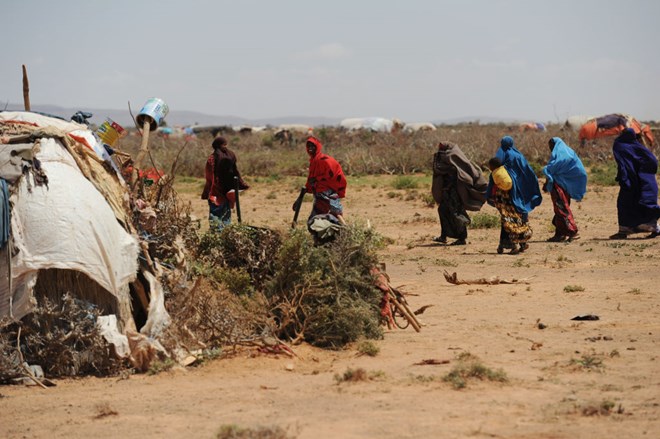United States provides over $151 million in additional assistance to respond to the crisis in Somalia
US AID
Source: US AID, Thursday September 22, 2022

Somali families displaced by severe drought create a makeshift camp as the Horn of Africa faces severe drought on the outskirts of the village of War Idad, 150 miles east of the capital Hargeisa, Somalia, on June 19, 2017. /Getty Images
The United States, through the U.S. Agency for International Development (USAID), is providing more than $151 million in new, urgently needed assistance to the people of Somalia. $146.5 million is for food assistance, as catastrophic drought cripples the country and pushes more than 7 million people to the edge of starvation. The remaining nearly $5 million in humanitarian assistance will provide support for disaster resilience and economic recovery and market systems activities. Today’s new funding builds on another recent funding surge of $476 million in humanitarian aid in July, bringing the U.S. Government’s contribution to more than $870 million for the people of Somalia – representing more than half of all humanitarian funding for Somalia in 2022.
USAID’s critical assistance comes in response to an expert Famine Review Committee’s projection that Famine is likely to occur in Buur Hakaba and Baidoa districts of southern Somalia this year unless an urgent increase of humanitarian assistance reaches people most in need. The United States is gravely concerned by this stark forecast and by the rising level of humanitarian needs throughout the country, primarily as a result of a historically unprecedented drought marked by four back-to-back failed rainy seasons. Early projections of a fifth failed rainy season further threaten to condemn people in Somalia, who already find themselves in dire conditions, to unbearable levels of suffering.
Today’s announcement will allow USAID partner the World Food Program (WFP) to provide an additional two and a half months worth of emergency food assistance for 3.6 million people. USAID will provide cash and vouchers for Somalis to purchase food from local markets, both supporting the local economy and ensuring families facing starvation get what they need. The new assistance will support the most vulnerable families who are at immediate risk of famine, with a special emphasis on individuals who have been forced to flee their homes due to the drought.
Prior to the Famine Review Committee’s projection, USAID had already rapidly scaled up relief efforts to provide emergency assistance. This includes providing emergency food assistance to at least 3.5 million people per month, delivering vital malnutrition treatment, responding to disease outbreaks and other health needs, providing shelter and protection services, and supplying communities with safe drinking water, sanitation, and improved hygiene.
The United States government urges the international donor community to act immediately to scale up humanitarian funding for the Somali people to prevent this Famine projection from becoming reality.
